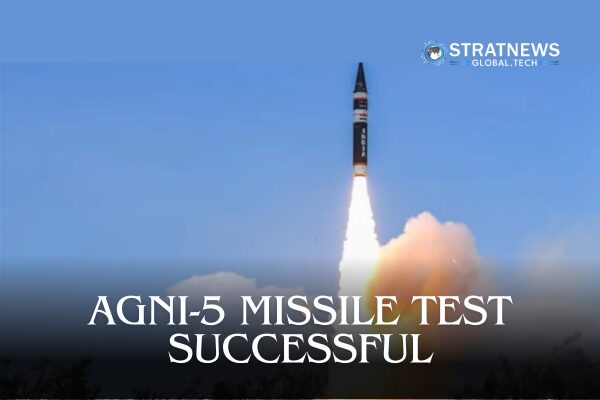India Successfully Tests Agni-5 Ballistic Missile, Strengthening Strategic Deterrence
India has conducted a successful test of its nuclear-capable intermediate-range ballistic missile, Agni-5, from the Integrated Test Range in Chandipur, Odisha. The launch took place on 20th August 2025 and was carried out by the Strategic Forces Command. According to the Ministry of Defence, the missile met all operational and technical benchmarks, confirming its combat readiness.
Agni-5: A Key Component of India’s Nuclear Arsenal
Developed by the Defence Research and Development Organisation (DRDO), Agni-5 is one of India’s most advanced long-range ballistic missiles. With a range of over 5,000 kilometres, it plays a crucial role in maintaining the country’s nuclear deterrence. The missile features cutting-edge guidance, navigation, warhead delivery, and propulsion technologies.
India reaffirmed its commitment to a credible minimum deterrence posture through this test, which forms part of routine user trials to ensure readiness in strategic systems.
Advanced Capabilities and Future Developments
Agni-5 is equipped with Multiple Independently Targetable Reentry Vehicle (MIRV) capability. This allows it to carry and release up to three nuclear warheads aimed at separate targets. The first successful MIRVed test was carried out on 11th March 2024 from Kalpakkam in Tamil Nadu.
DRDO is currently working on an upgraded version of Agni-5, aiming for a range of up to 7,500 kilometres. Future variants are also expected to include bunker-buster capabilities, increasing the missile’s effectiveness against fortified installations.
These developments signal significant advancements in India’s strategic defence capabilities and reflect the ongoing modernisation of its missile arsenal.
Regional Reactions and Strategic Implications
The latest Agni-5 test has caused concern in Pakistan. The Strategic Vision Institute (SVI), a defence think tank in Islamabad, has advised its leadership to closely monitor India’s missile progress. SVI claims that India’s capabilities have grown rapidly since joining the Missile Technology Control Regime (MTCR) in 2016.
According to SVI, future versions of Agni-5 could reach distances beyond 8,000 kilometres, potentially targeting cities such as Washington, Moscow, and Beijing. They also expressed worry over India’s expanding naval nuclear arsenal, which includes submarine-launched ballistic missiles.
Pakistan’s concerns highlight growing regional tensions and the strategic significance of India’s missile advancements on the global stage.


